


Spring 2023 V o l u m e 1 3 , I s s u e 2
Volunteerism a strong connector in the Ukrainian community
Volunteers help underserved in Saskatoon
Diane ell, editor dell@saskculture ca
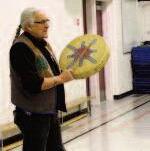


Jackie lay, Publishing Coordinator jlay@saskculture.ca 404, 2125 11th Ave , Regina sK s4P 3X3 Tel: (306) 780 9284 www.saskculture.ca


Graphic Design: J. lauder Publishing & Design joanne.lauder@sasktel.net

contributing Writers: Jackie lay, John loeppky, Nickita longman and Ana Cristina Camacho

Engage Published by saskCulture Inc., is designed to highlight the work of cultural leaders, volunteers and the diversity of activities supported by the Culture section of sask lotteries Trust Fund for sport, Culture and Recreation. 2 S p r I n G 2023 message from the Ceo . . . . . . . . . . . . . . . . . . . . . . . . . . . . . . . . . 3 Volunteers help underserved in saskatoon . . . . . . . . . . . . . . . . 4 Volunteer Peer Assessors offer diverse perspectives and experience . . . . . . . . . . . . . . . . . . . . . . . . . . . . . . . . . . . . . . . . . . . 6 Travelling artist takes music lessons to underserved communities 7 understanding the role of Helper - important to Indigenous communities . . . . . . . . . . . . . . . . . . . . . . . . . . . . . . . . . . . . . . . . . . 9 métis local connects community through moccasin-making . . . . . . . . . . . . . . . . . . . . . . . . . . . . . . . . . . . . . 10 Volunteers contribute to growth of historical society . . . . . 12 Volunteerism a strong connector in the ukrainian community . . . . . . . . . . . . . . . . . . . . . . . . . . . . . . . . . . . . . . . . . . 14 Volunteers key to 20-year old Indigenous storytelling series 16 Rivers West District volunteer awards connect at a personal level 18 Battlefords Community Players celebrates 75 years thanks to volunteers . . . . . . . . . . . . . . . . . . . . . . . . . . . . . . . . . 20 Volunteer helps cultural centre on a sustainable path forward 22
this publication are circulated for free to saskCulture members, partners and through community outreach activities as determined by saskCulture Inc Engage is also available in PDF version on the saskCulture web site at www saskculture ca Engage is published thanks to financial support from sask lotteries Trust Fund for sport, Culture and Recreation The publication does not currently accept paid advertising Article ideas for future publications can be submitted to info@saskculture ca or by calling (306) 780-9284 Published march 2023 Articles may be reprinted with permission Direct Inquiries
Print copies of
to:
Contents Spring 2023 V O l U m e 1 3 , I S S U e 2 O n t h e c O V e r:
7 10 12 16 4
Volunteers
pre-CoVID
at the Prairie Prism Culture Days event Photo by Kevin Hogarth (2018).
message from the ceO



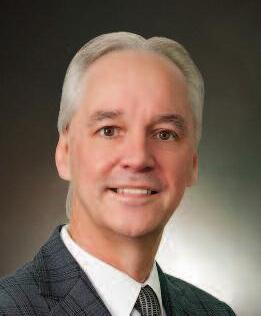


Growing up in the small village of Hyas, sK, in east central saskatchewan, we never used the term “volunteer” Trust me, we volunteered all the time We didn’t call ourselves volunteers In a village of just over 100 residents, we often had to take matters into our own hands or things would not get done. The grass on the ball diamond had to be cut if we wanted to play ball. The chairs in the hall had to be set up if we wanted to have a school event. We often were “voluntold” – thanks to the adults in the community. And, at some point as we grew up, we didn’t have to be told because we knew we were part of the community and we had responsibilities to get stuff done Plain and simple

When I arrived in Regina and starting my journey of higher education, I began to understand the larger meaning of volunteerism and how urban centres rely on volunteers, most visibly when holding large events While I realized volunteers were important to many actvities, I truly began to understand the impact of volunteerism in saskatchewan as a whole in 2010 when I started my job at saskCulture.

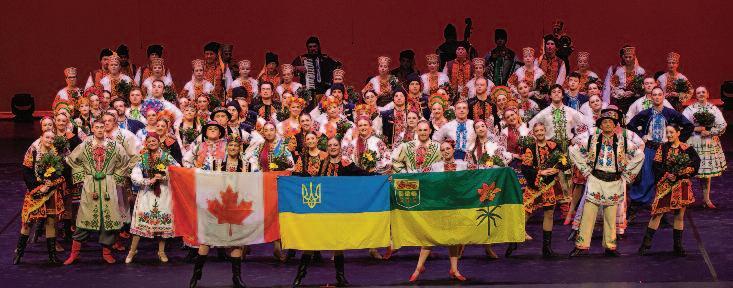
Volunteers are the backbone of the sask lotteries system. They fundraise. They take tickets at the door. They clean up after an event. They volunteer to sit as directors on boards and spend their valuable time on everything from planning to sharing talents and skills to preparing food because they are passionate about what they love about their communities and about being helpers, leaders and sources of inspiration for many many raise their hand to take roles such as the rigorous work required by saskCulture volunteers who sit on funding peer assessment panels
unfortunately, the pandemic had a serious impact on volunteerism in the province; our research showed that in 2020, volunteerism in the cultural sector was down by approximately 84 per cent. Now that many cultural programs and services are trying to re-engage their participants and audiences, organizers are having difficulties recruiting new volunteers, or encouraging past volunteers to return To maintain a healthy cultural sector in the province, we have to re-ignite people’s desire to volunteer – to be part of growth, to support and live their passions. many volunteers have created legacies –organizations, events and traditions are often a result of someone’s dream Volunteers are leaders and community builders – they in turn inspire future leaders This issue of Engage highlights some of our province’s amazing volunteers. If we had to focus on every single one of our cultural volunteers, we would need a million more pages in this issue. on behalf of saskCulture, thanks to all of you!
S p r I n G 2023 3
Volunteers across saskatchewan have contributed to a culturally vibrant province Photos courtesy of (from top to bottom): Rivers West District, TAYFFI and Karen Pidskalny Photography.
When people become volunteers at the Truly Alive Youth and Family Foundation they gain more than skills, they become connected to that community in a unique way. Dedicated volunteers are essential to supporting and providing a safe environment for many underserved groups in saskatoon
“Truly Alive Youth and Family Foundation Inc (TAYFFI) volunteers are often friends, family, and community members from many diverse cultures, with whom many of us have formed friendships,” explains Anthony olusola, executive director, TAYFFI. “Therefore, our volunteers often feel like family, which makes TAYFFI warm and inviting when providing services to those who are potentially vulnerable or in new situations.”
since the start of the organization in 2016, volunteers have played a pivotal role in not only starting the organization, but


developing the programs and supporting the mandate.
“The foundation emerged from the coming together of some members of saskatoon’s Black communities to give back to the Greater saskatoon Area,” he says. They help “in key areas of youth mentorship, family support and to be part
of the solutions towards building a society that is socially cohesive where everyone lives and thrives, as opposed to barely getting by and surviving ”
The organization has now grown to serve all visible minority groups, especially those from underserved, ethnic, and racialized households to foster engaged and contributing members of their respective communities Closely allied with Indigenous communities, the organization is addressing the Truth and Reconciliation’s Calls to Action through ongoing learning opportunities from Indigenous elders and Knowledge Keepers
ToP: Volunteers help with family outings, such as the Indigenous-Immigrants Heritage learning event, where newcomer youth learned about Indigenous traditional dances during an excursion to Wanuskewin Heritage Park

mIDDle: Volunteers assisting with the sorting, wrapping, and delivery of wellness hampers to over 100 households in saskatoon’s inner-city and ethnic minority communities

4 S p r I n G 2023
V O l U n t e e r S h e l p U n D e r S e r V e D in
B y J a c k I e l a y
saskatoon
g ,

majority of whom are from the 15-25 age group, help as youth mentors, youth senate members, board members, event coordinators, senior program volunteers, women’s program volunteers, and administration office volunteers, as well as supporting grant-writing and conducting research This past year, 15 volunteers contributed over 420 hours to the organization.
olusola says volunteers are extremely important to TAYFFI’s ability to perform efficiently as an organization. “We have committed our organization to giving back to the community and providing a place for community members to volunteer their time and energy in a resourceful and educational way. Volunteers help the organization as a whole and help our program coordinators, who have a lot on their plates, do their jobs better ”
Ngagwungrieyi urang is one of those volunteers Three years ago, she started volunteering with one of the women’s programs and immediately felt a strong
g g g p
community she found the staff and other volunteers were so welcoming. she also serves on the TAYFFI board, and sat on last year’s Black History month planning as a youth mentor.
urang, now a nursing student at the university of saskatchewan, says, she wants to continue her involvement with the organization because they are making such a positive impact. “They are helping people in the way I would have appreciated being helped when I first came to Canada in 2018 It was definitely a struggle for me that first while, moving away from my family in Nigeria and settling into a new environment.”
olusola says volunteers like urang, “offer fresh ideas and strategies that we may have overlooked and often have great insight into what programs need to improve in terms of what they think their peers need.”

He says that many of the volunteers for the organization often start out in one of the many TAYFFI programs but, “over
, y p
their community and continue to assist TAYFFI in its mission to help as many vulnerable individuals in saskatoon as possible. We love to see this kind of dedication within our volunteers and watch them grow as they work within the community.”
He goes on to add that their organization has grown exponentially over the last few years because of volunteer input. “As we continue to grow, we strive towards strengthening relationships with existing/potential volunteers and funders to help us reach our goals and priority outcomes ’’
TAYFFI received project funding from the SaskCulture’s Multicultural Initiatives Fund funded by Sask Lotteries Trust Fund for Sport, Culture and Recreation.
S p r I n G 2023 5
Thanks to volunteer contributions, TAYFFI executive Director, Anthony olusola (back centre) was able to present successful candidates with $2,000 scholarships toward their post-secondary education. Photo courtesy of TAYFFI
offer Diverse Perspectives and experience

april sora, a saskCulture volunteer, contributes to the diversity of perspectives needed to ensure integrity in funding decisions
sora, Immigration, Diversity and Inclusion Consultant, City of saskatoon, is one of 20+ community volunteers who make up Peer Assessment Panels that review and assess grant applications made to saskCulture funding programs.

When asked about her experience being part of funding decisions, sora says that there are “quite a few advantages to the way that saskCulture administers its grant adjudications. I think it’s very important for community members to be a part of it you get a broad variety of perspectives,” she says
The majority of funds distributed by saskCulture, proceeds from the sask lotteries, are reviewed and allocated by volunteer community members. This peer assessment model involves bringing together people from the cultural sector with different perspectives to identify cultural activity that contributes to building a culturally vibrant province.
Dean Kush, Ceo, saskCulture, says that as a community-based non-profit organization, it’s important that grant assessment creates confidence in the
community and that funds are meeting the needs of saskatchewan people
“When we bring together people from all over the province, who are involved in their communities and involved in cultural activity, they have a better understanding of what is needed,” he says. “When they review grant applications, they understand how the proposed activity is going to work in their community They see the value of it, and can identify potential issues.” members of the peer assessor pool adjudicate particular funding programs based on their cultural and subject-matter experience For example, diverse voices from the heritage sector will adjudicate funds in the museum Grant Program and an all-Indigenous panel will adjudicate the Aboriginal Arts and Culture leadership grant. sora has volunteered as part of saskCulture’s peer assessor pool for five years. In this time, she has seen how having a variety of perspectives at the table can open the door for informed discussions. Though it can be time-consuming to go through all the applications in a funding
round, she says that taking part in these sessions has been a rewarding way to stay connected to cultural activity in the province.
“I think it is a very important role; you really need to put the time in,” sora says “You learn about organizations, you learn about different projects, and you learn about different perspectives from the other adjudicators. You also create a network with the people you meet, and you can learn from them as well ”
Kush says that peer assessors who bring their “knowledge, perspective and cultural identity” to the role are the very basis of saskCulture’s funding operations.
“Volunteers do it because they believe that sask lotteries and the funding that goes to communities is making a difference They’re doing it because they feel like it’s important for saskatchewan.”
ToP: April sora has volunteered her time to saskCulture contributing to the variety of perspectives needed to make decisions on funding
Volunteer peer review panels put many hours into making decisions about how funds are distributed by saskCulture
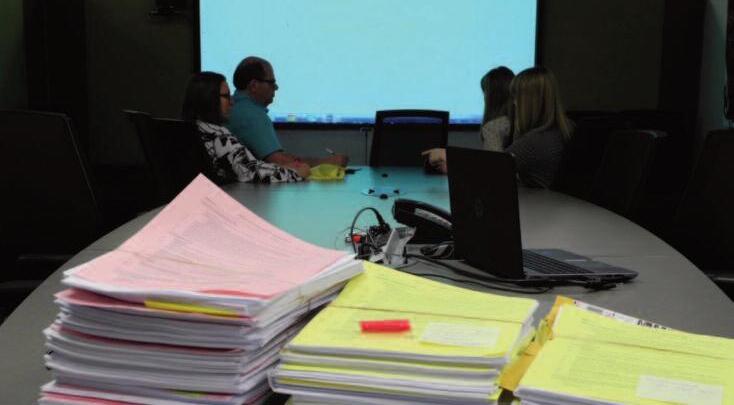
6 S p r I n G 2023 V O l U n t e e r p e e r a S S e S S O r S
B y a n a c r I S t I n a c a m a c h O
a p r I l S O r a
A s s e s s o R N o T e s
underserved Communities

When eliza Doyle, a travelling musician, began teaching music in Northern saskatchewan, she had no idea it would lead to her becoming the volunteer artistic director and cofounder of CAmP sask Arts.
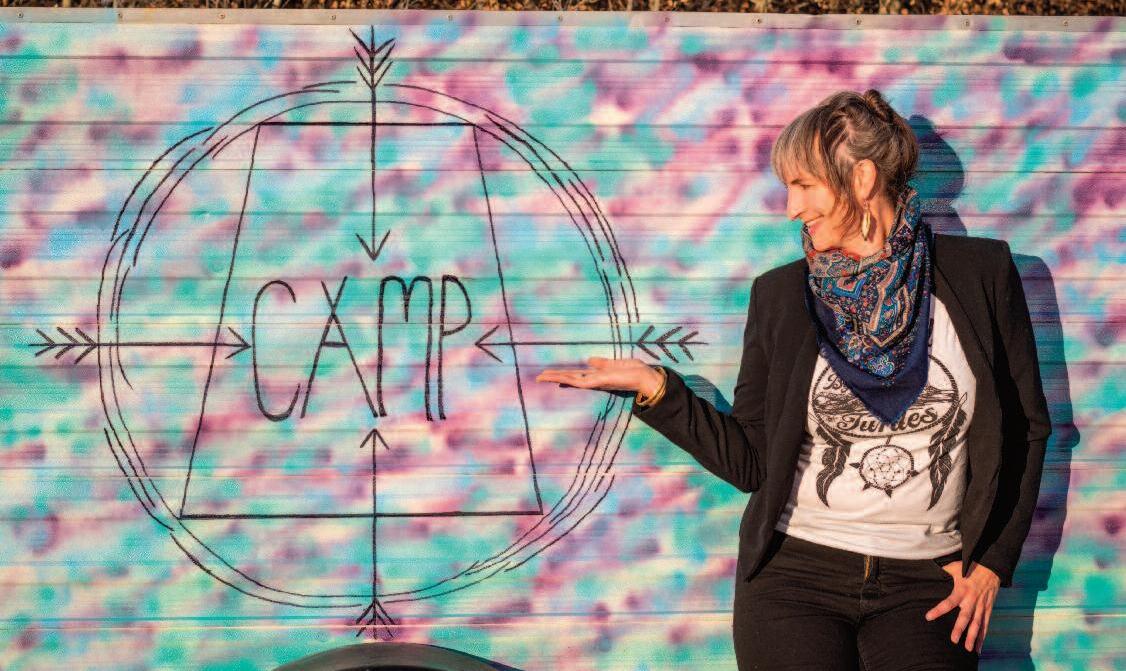
In 2019, after receiving a grant from the saskatchewan Cultural exchange (sCes), she went for five weeks to teach music lessons in stanley mission, sK. After the project ended the community asked for her to continue.
“They said, ‘Well, you know, don’t be like everybody else. Don’t come up here and start something and inspire everybody, and leave, it’s not working,” says Doyle so, in response, she would go on to cofound Community Arts mentorship Program (CAmP) sask Arts with Holly Rae Yuzicapi The organization now teaches in eight communities, filling an arts
education gap in underserved communities throughout the province.
lJ Tyson is one of the program’s educators. He says that, since meeting Doyle, his time teaching for the program has heavily informed his own work as an artist.
Teachers, such as Tyson, “share the load” when they teach for CAmP sask Arts. Doyle figured out early on that sharing teaching contracts between three to four artists was an easier sell than a much longer solo gig.
since the early days, CAmP sask Arts has experienced rapid growth. Participation in their programs is making it harder to manage their organization In an effort to create more sustainability, they are presently participating in saskCulture’s lifecycles program to figure out what the next stage for the non-profit will be.
“Altogether, we have 13 board members,” explains Doyle, “we’re realizing that we need a lot more support in running the business aspects of our organization
S p r I n G 2023 7
“I’ve been teaching for CAmP for a little over a year and a half now and to see these kids grow, learn, and fall in love with music, just reinvigorates my love of music. some of the things they say and some of the questions they ask me, just remind me so much of myself when I was their age.”
t r a V e l l I n G a r t I S t t a k e S m U S I c l e S S O n S t O
eliza Doyle, volunteer artistic director, founded CAmP sask Arts so that underserved communities across the province could have access to arts experiences
B y J O h n l O e p p k y
Because right now I’m the president, I’m also running programming, and I’m kind of like the artistic director, an overseer. And it’s not really a position that I can keep volunteering for because it’s just too time consuming.”

Doyle says that the organization is bumping into what many arts nonprofits
realize: the reality that arts and administration, including aspects such as board governance and insurance, don’t always mix comfortably.
“I’m not a business person, I’m a dreamer and a community leader. so, that’s one of the reasons we’re restructuring. We’re so
grateful for the strategic planning grant (Community Planning and engagement Grant) from saskCulture because we’re growing really quickly, we just need to get, all those other things in place.”
The impact of the organization is felt by participants such as shellie mcleod, who says that CAmP sask Arts has allowed her to recognize just how much she loves music, including the fiddle. “I haven’t really had much interaction with playing music. And I was a bit shy going into that class But the first few days, I didn’t think I was really going to like it. But I’ve learned that I really loved it ”
A fiddle donation allowed CAmP sask Arts to provide fiddle lessons, something that Doyle says the elders in the community requested. Now, mcleod plays a fiddle, known as Joyful libby, named after two of her teachers
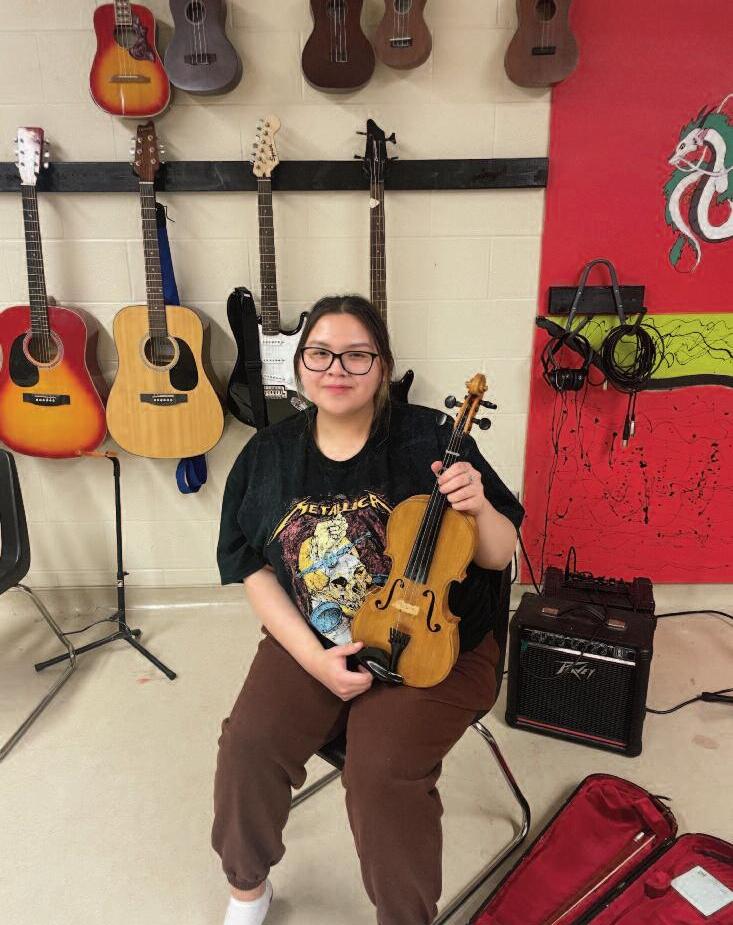
For eliza, its little stories like this that make the work rewarding. “When you see the spark of music reach a student that never even knew that they were a musician, or might have never had the opportunity to discover that, that’s really what makes this whole thing worth it.”
CAMP Sask Arts has received project support from SaskCulture’s Multicultural Initiative Fund, Northern Youth Multicultural Fund and the Small Grant Accessibility Program funded by Sask Lotteries Trust Fund for Sport, Culture and Recreation.
Thanks to CAmP sask Arts, shellie mcleod found her love for music and learned to play the fiddle

8 S p r I n G 2023
Important to Indigenous Communities
knowledge Keeper kehtê-aya linda Young says that, understanding why some words don’t exist in the Cree language and why other words do allows for the true understanding of the teachings within a culture
linda Young, a Band member of onion lake Cree Nation, a 4th generation Residential school survivor, is often consulted about Cree protocol and teachings. she speaks from the Plains Cree perspective on many subjects including the importance of language
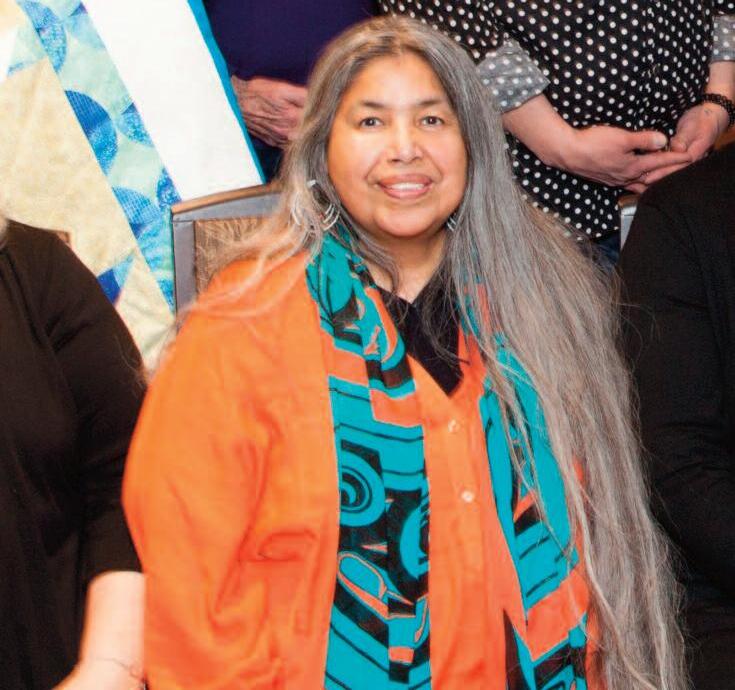
Young says it is important to understand the critical differences between being a ‘Helper’ and volunteering. understanding these differences will contribute to relationship building and lead to understanding why Indigenous peoples may contribute differently to the community
There isn’t a word for ‘a volunteer’ in the Cree language because the concepts of giving and helping are embedded in every aspect of the culture, language and teachings, says Young “We’ve always been a people who helped each other We were raised to practice generosity and kindness; it is our way of life.”
Young’s mother always said, “Don’t wait to be asked to give or to help. You don’t own what you have given, it is no longer yours You don’t follow where it goes, how it’s being used, and you don’t seek recognition for being the person that shared or gave it away.”
The closest meaning to the word volunteer in english is the word ‘Helper’, but when used in a Cree ceremonial context, the word ‘Helper’ should be capitalized to show respect for that role and the teachings that go along with it.
There is a difference between sacred and secular when it comes to the Cree language. There also isn’t one word for ‘Helper’ in the Cree context Depending on the type of Helper, there are many

different terms and teachings that come along with those roles in the community. The most recognized term is oskâpêwis which refers to a male elder’s Helper or a Helper at ceremonies she adds, “owîcihtâsow means somebody who is a Helper of people and onîsôhkamâkêw is an assistant, another variation of the word helper ”
That is why it is essential, she adds, for people who are not Indigenous, to listen to the experience of First Nation peoples and recognize that those experiences are different and have a deeply respected and sometimes sacred value For example, she
noted how saskCulture staff members listened to her and others who sat on its Advisory Circle, which ran from 2004-2014. she explains how, “They listened, took the advice and suggestions the Advisory Circle shared and took it to heart. I was part of the process and saw the outcome. It’s nice to know that the First Nations and métis Advisory Circle was more than a statistic for the organization ”
S p r I n G 2023 9 U n D e r S t a n D I n G r O l e O F h e l p e r –
B y J a c k I e l a y
Knowledge Keeper, linda Young has advised saskCulture on a number of Indigenous matters since 2004
- l I n D a y O U n G
“We’ve always been a people who helped each other. We were raised to practice generosity and kindness; it is our way of life.”
Through moccasin-making
providing a moccasin-making workshop that eliminated barriers to participation, one that was delivered by a member of the local métis community, and one that had volunteer and community support, was important to Carla Hope, activity organizer and president of Kinistino metis local #43.
last fall, the métis local organized a moccasin-making workshop to revitalize cultural teachings and traditions within its community Hope wanted to ensure that all members were able to participate without barriers. This included providing a

space to gather, providing all supplies necessary, and full access to an instructor.
“This project meets our communities’ need for multi-generational interaction and the sharing of traditional skills and knowledge,” Hope says Ronda mcQuarrie, a local traditional beader, who has led many moccasinmaking workshops previously, eagerly joined the project as an instructor and facilitator. “I have a passion for beading and creating cultural wearable art,” she says. “I feel it is important to keep these
traditional art forms alive and pass them on to other people.”

The community recognized the importance as well and the workshop filled up quickly hosting 21 participants – the largest group mcQuarrie has instructed within her facilitation work. “It was great to see our youth, adults, elders and non-Indigenous people socializing and creating together ”
Participants were able to work with moose hide, beaver fur and glass seed beads With the help and guidance of mcQuarrie, they were all able to produce a pair of authentic, hand-stitched, traditional métis, floral-beaded moccasins, created specifically in a métis beading style.
10 S p r I n G 2023
Thanks to Helpers from the métis community, Kinistino area residents were able to come together for the moccasin making Workshop
m é t I S l O c a l c O n n e c t S c O m m U n I t y
“This project meets our communities’ need for multigenerational interaction and the sharing of traditional skills and knowledge,” Hope says.
B y n I c k I t a l O n G m a n
“The participants really seemed to enjoy the class and were very happy with their completed moccasins,” she says. “I have had a few people ask me questions since about making more moccasins [There is a] definite interest in participating in future projects like this one.”

As with any successful event, volunteers, also referred to as ‘Helpers’ in Indigenous communities, played a big role in the


delivery of the moccasin-making workshop. mcQuarrie says that, the helpers for an event, such as the beading workshop, are largely family and relatives of members of the local who regularly donate their time for community gatherings and events.

“most of this is very informal,” she explains, “and if there is a need for something to get done, they just seem to step up and do it ”
Furthermore, mcQuarrie shares, that she is
also a volunteer. Her knowledge and skill-set to refine beadwork and moccasin-making, as well as the preparation involved to facilitate, are all done on her own time.
With a successful turnout and eager participants, mcQuarrie says that many have continued to work on their beading skills outside of the workshop “They are taking up this art form and embracing this aspect of their culture,” she says “They are now able to share it with their children and grandchildren. This class could lead to an intergenerational sharing of culture ”
mcQuarrie hopes that more projects like this will continue to happen in her community so she can share her gift with others. “I would love to be able to teach a class on [making] gauntlet mitts, and continue to teach different beading techniques to the community.”
This project received support through the Métis Cultural Development Fund, administered by Gabriel Dumont Institute on behalf of SaskCulture, and funded by Sask Lotteries Trust Fund for Sport, Culture and Recreation.
S p r I n G 2023 11
Growth of Historical society

It is thanks to volunteers that the Prince Albert Historical society has been operating for so long and become one of the oldest historical societies in Western Canada
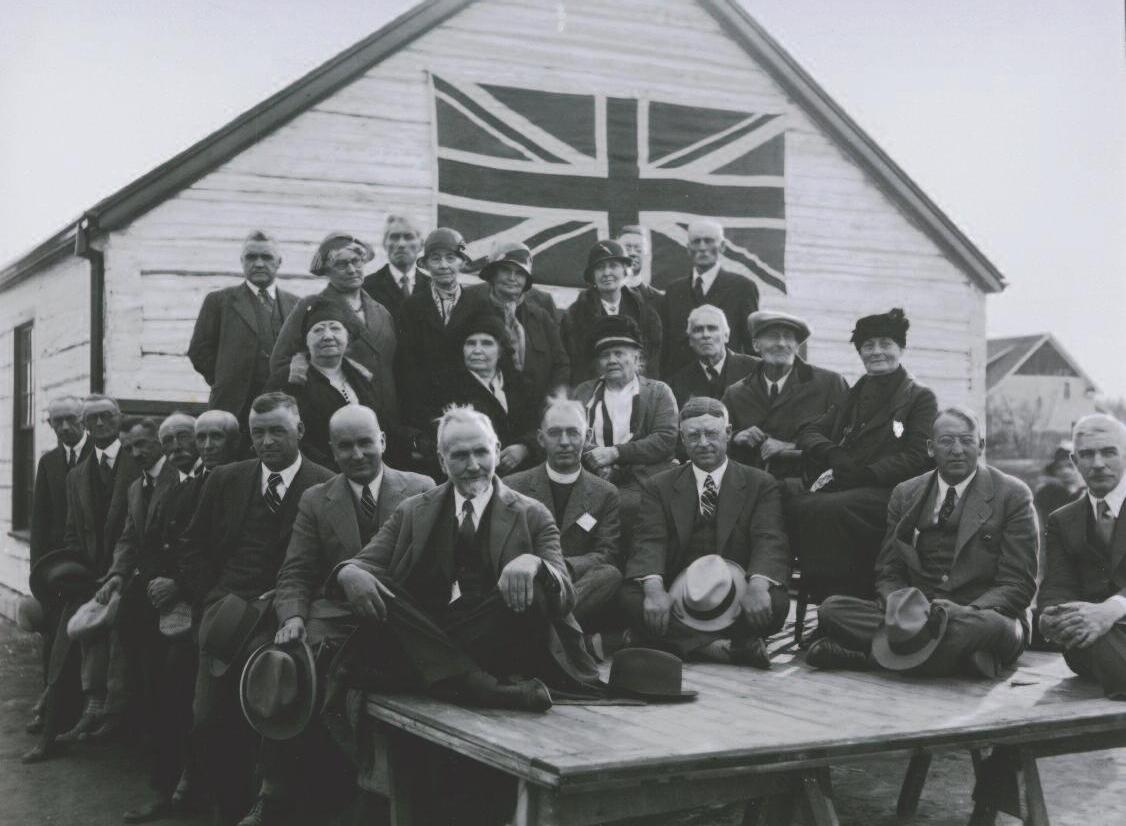
“I cannot say enough good things about the volunteers here at the Prince Albert Historical society (PAHs) because they have made my job easier,” says michelle Taylor, curator and manager.
A group of volunteers first established the historical society in 1886. In 1890, a fire destroyed the collections and the building. In 1923, the second inception of PAHs was led by a group of interested citizens that recognized the need to preserve and share the area’s history The society now operates
four museums in three locations within Prince Albert The museums capture the history of the Prince Albert area and include themes related to education, policing, as well as Indigenous and settler history
For over 60 years, the PAHs volunteers ran the society and museums They sat on the board, set up the exhibitions, did all the administration, building maintenance, acquired the funding and archived materials. But now thanks to the hiring of Taylor in 2009, they get to do more of the fun stuff, such as archiving, preparing the collections, helping with community presentations, leading guided tours and volunteering at special events. “The volunteers don’t have to think of
everything now. They can just come in and do,” she says
In her role as a full-time curator and manager, she has been able to expand the number of exhibitions and hire more staff As a result, the museum can open more often throughout the year.
Another result of the PAHs volunteer’s contributions are the Bill smiley Archives, which now contain over 12,000 photographs, 300,000 negatives, and 20,000 documents
12 S p r I n G 2023
B y J a c k I e l a y
In 1932, PAHs members recognize the opening of the Heritage museum Photo courtesy of PAHs
one of those devoted volunteers is shirley swain who enters the written collections into the archival database. As a 12-year volunteer, she continues to contribute her time because she enjoys the work and likes spending time with the other volunteers at the society.

“The other day, myself and another volunteer were looking at a photo of a house demolished in 1939, and it was interesting trying to figure out where it was in town I also entered a letter, from the early 1920s, from Grey owl. I really like being around the other volunteers and discussing the local history we see ”
That continued dedication is evident last year, 33 volunteers donated over 3,300 hours of their time.
Taylor says because so many of the volunteers have had long-time involvement with PAHs, she was able to learn how to run the society from them. “I had very little experience when I started
and they taught me so much. They even taught me how to write grant applications ”
Thanks to how much work the volunteers do and the money saved, funds instead go toward the exhibitions, such as the recently launched Kistapinânihk/ omaniciye makoca/Tł’ogh tëlë “The Gathering Place” exhibit, which celebrates the Indigenous history of Prince Albert and area

“With the number of volunteer hours contributed to the society, we have been able to grow the collection and public face
of the society It couldn’t have been done without the volunteers’ commitment.”


The Prince Albert Historical Society is supported annually through SaskCulture’s Museum Grant Program, thanks to funding from Sask Lotteries Trust Fund
ToP: The PAHs volunteers contribute their time to setting up displays and exhibitions, such as the Indigenous Ways of Healing, at the Victoria Hospital in 2019 Photo courtesy of PAHs leFT: shirley swain, one of the PAHs dedicated volunteers, enjoys opportunities to volunteer Photo courtesy of PAHs
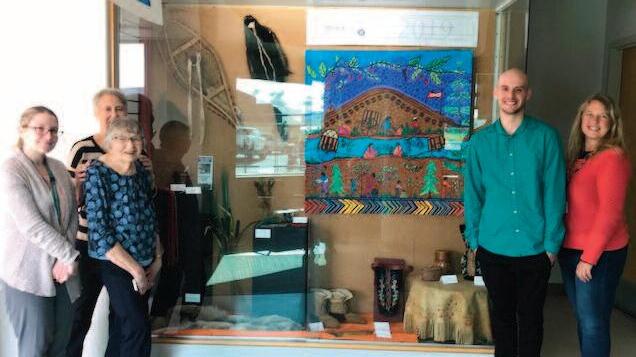
S p r I n G 2023 13
V O l U n t e e r I S m a S t r O n G c O n n e c t O r
in the ukrainian Community
For the ukrainian Canadian Congresssaskatoon Branch, much like so many cultural organizations throughout saskatchewan, volunteers are the reason the organization exists, and why the community remains connected

“Volunteers are an integral part of our organization and without them, we wouldn’t be able to do everything we do,” says megan Worobetz, vice president, and a volunteer board member, ukrainian Canadian Congress - saskatoon Branch (saskatoon uCC) since 2018
New to the saskatoon uCC Board, Karen Pidskalny says the ukrainian communities throughout the world are built in a foundation of volunteerism. “It’s about building community and staying connected within your community ” The saskatoon uCC is a federation of organizations within
saskatoon that assists saskatoon's ukrainian community in maintaining, developing and sharing its ukrainian Canadian identity and aspirations. They are a member of the provincial and national uCC.
“We are the voice of the ukrainian community in saskatoon uCC saskatchewan brings all the ukrainian organizations in the province together in one body as an umbrella organization That way everyone can hear what everyone else is doing. And I can tell you in the ukrainian community, everybody is doing something,” laughs Pat Tymchatyn, now saskatoon uCC President and longtime board member
Normally, saskatoon uCC's activities consist of the yearly ukrainian Day in the Park in August, hosting events and doing the public relations for performers and speakers from outside of saskatoon; cultural lessons and

activities (right now bandura lessons are taking place); as well as, coordinating the yearly volunteer recognition event in saskatoon However, this year due to the invasion of ukraine, its’ volunteer workload increased significantly with rallies, fundraising events, as well as, setting up a furniture depot for displaced ukrainians.
The number of volunteers has also increased so much this year Tymchatyn isn’t even sure how many volunteers there are now, as hundreds of people have turned out to help depending on the event or activity. The Board of Directors still remains the core group of volunteers, and according to Tymchatyn, that group is dedicated.
14 S p r I n G 2023
B y J a c k I e l a y
ToP: saskatoon uCC recognizes volunteers from the community at a yearly event Photo by megan Worobetz
some of the results of their volunteer efforts this year were not surprising given their ability to unite the ukrainian community The united for ukraine concert, held on November 12, 2022, raised $58,000 for the cause. everyone involved in organizing the event and all the performers volunteered their time It was a big member collaboration, she says
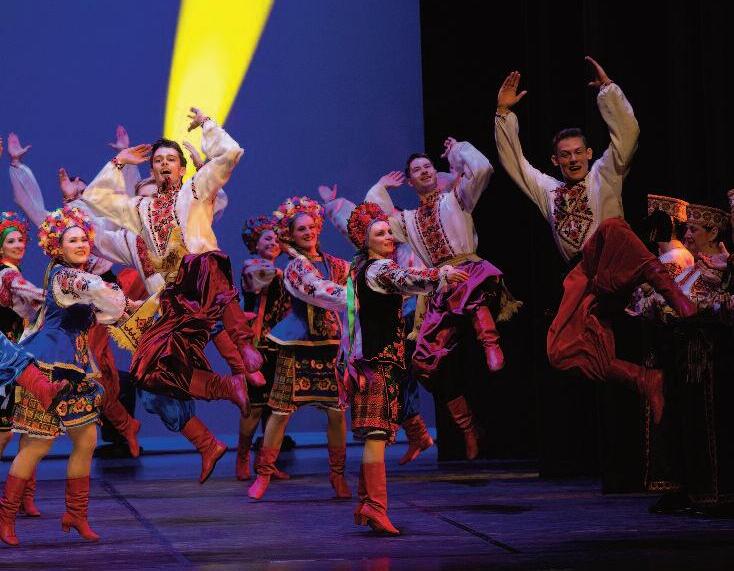
This past year, Pidskalny spearheaded the sunflower Project which saw sunflower seeds, donated by early Garden Centre, sold in Co-op stores across saskatoon, raising $11,000.

All three women, Worobetz, Pidskalyny and Tymchatyn, are dedicated volunteers who have been volunteering within the ukrainian community for years. All agree that volunteering their time has given them friendships and opportunities they wouldn’t have had otherwise, and the rewards outweigh the effort
Pidskalny says volunteers often don't realize their impact. "We don't realize volunteering is our contribution to
humanity When we talk about how important it is to volunteer, we never talk about the values you gain from volunteering You gain skills You learn to budget, you learn how to become leader, you learn how to manage people and more.”
Worobetz says, she’s learned a lot about community-building and volunteer management through her involvement and has this tip for other organizations, “It’s important to recognize and build on the individual strengths that your volunteers bring to the table and it’s important to recognize your volunteers ” Besides the benefits, Pidskalny says, one thing is for sure, the ukrainian community always pulls together There’s no problem finding volunteers, she says, “I think that’s the way we raise our children and the way we’ve been raised is to participate in the community.”
Saskatoon UCC received project support through the Multicultural Initiatives Fund, funded by Sask Lotteries Trust Fund for Sport, Culture and Recreation


S p r I n G 2023 15
“It’s important to recognize and build on the individual strengths that your volunteers bring to the table and it’s important to recognize your volunteers.”
ToP: Volunteers megan Worobetz (far right) and Pat Tymchatyn (second from the left) celebrate the success of the sunflower Project spearheaded by Karen Pidskalny BoTTom: Volunteer performers raised $58,000 at the united for ukraine concert Photo by Karen Pidskalny Photography
Indigenous storytelling series


as with many successful, longrunning programs the dedicated volunteers, who support the Annual saskatchewan Aboriginal storytellers series, fill important roles and provide the heart, soul and energy needed for the program to thrive over the years.

Throughout its 20 years, the saskatchewan Aboriginal storytellers (sAs) series, hosted by the saskatchewan library services for saskatchewan Aboriginal Peoples (lssAP), has seen many ups and downs, including the adjustment to delivering the program online throughout the pandemic years The series, currently celebrating 20 years, was formed out of a volunteer committee within lssAP and was intended to improve the accessibility of library services for Indigenous people in the province.
Whether the series is delivered online or in person, Jessica Generoux, coordinator, ssAs, says the importance of volunteers remains crucial to the program’s success “Volunteerism created the sAs project and

16 S p r I n G 2023
T
ToP: The sAs events take place every year in February across the province
B o
T
o m: Harriet Roy (on the left) a long-time volunteer of sAs, presents artwork
V O l U n
established its sustainability over the years through the library services for saskatchewan Aboriginal Peoples (lssAP) committee ”
t e e r S k e y t O 20-y e a r O l D
B y n I c k I t a l O n G m a n
Twenty years ago, introducing the tradition of storytelling within the library systems in saskatchewan seemed like a strong starting point. It created a space for cultural transmission of knowledge, Generoux says, “The storytelling events and projects promote, protect and preserve Indigenous knowledge in saskatchewan ”
When it started, the program saw 21 storytelling sessions and 2,813 participants throughout the province. By 2021, and perhaps due to a hybrid delivery of both virtual and in person, sAs recorded an attendance of over 30,000 participants. Generoux also shared that a major highlight was when the Government of saskatchewan officially declared February as storytelling month in the province over the years, volunteers have contributed in many ways, including assisting with crowd control, greeting, committee work, promotions and

communications, programming, video recording, technical support, set up/take down, as well as researching and distributing resources to community members in attendance With plenty of work going into storytelling month, Generoux explains, sAs’s volunteer engagement continued to expand over time – ranging anywhere from 50 to 100 volunteers she says, anyone associated with regional library systems can get involved in sAs projects
Harriet Roy (although now retired) has been a long-time volunteer since the formation of sAs and got involved through her role at Pahkisimon Nuye?àh library system in Air Ronge After the minister’s Advisory Committee report recommended more access to libraries for all saskatchewan residents, Roy says a committee was formed within lssAP to review the services of the public library system for Indigenous peoples, on and off
reserve. “We [aimed for more] participation in the libraries, and initially started hosting round dances,” Roy says shortly afterwards, sAs was created.
During Roy’s 20 years of volunteering with lssAP, the organization has seen three part-time coordinators help deliver the sAs series, as well as a growth in volunteers and participants Roy also shared that, as the program and its capacities have grown, so have the portfolios of Indigenous writers and storytellers in the province “Having the storytelling project in saskatchewan has made some inroads in making the public libraries more welcoming and has opened doors for Indigenous people to not only use the services, but also in becoming part of the library community ”
LSSAP received support from SaskCulture’s Aboriginal Arts and Culture Leadership Grant funded by Sask Lotteries Trust Fund for Sport, Culture and Recreation.

S p r I n G 2023 17
r I V e r S W e S t D I S t r I c t
Connect at a Personal level

after decades of celebrating volunteers at an annual in-person banquet, organizers realized that a personal thank-you and award delivery was much more successful
When CoVID hit, Bonnie mills midgley and Cynthia Tymoruski, both community development coordinators at the Rivers West District for sport, Culture and Recreation, were forced to end a 30-year tradition of thanking volunteers at an inperson banquet as part of its Volunteer Recognition Program Awards While the
District organizers mailed out the awards in 2020, Tymoruski and mills midgley started taking the celebration to the recipients’ communities over the past two years. In 2021, they delivered them one-onone, and by 2022, they were distributing the awards in person at several smaller events across the region.
“It’s something we’re going to do again this year, because it seems to be so much more successful,” Tymoruski says. “We get to be there and be part of that whole experience ”
For their 2022 awards, Tymoruski and mills midgley toured the District and met the award winners at their own volunteer banquets or events, or simply for a small lunch or outing. mills midgley says that celebrating volunteers in front of the community is an important way of recognizing their contributions.
“No volunteer does what they do for personal glory or anything like that They do it because they’re helping members of the community, or they’re helping the community in general to be a better
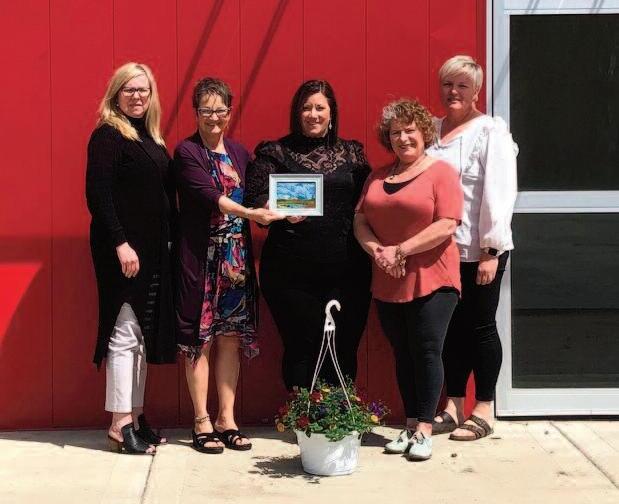
18 S p r I n G 2023
V O
l U n t e e r a W a r D S
B y a n a c r I S t I n a c a m a c h O
place,” mills midgley says. “In turn, when they get the thank you, and a small token that they can hang on their wall or take home, it just recognizes what they’re doing and that little bit of recognition goes a long way ”
mills midgley recalls one occasion where she drove to a 4-H year-end banquet in Hillmond to meet with over-All Volunteer winners Julie Hougham and Katie Clark. While before only the volunteers and one or two family members would typically attend the awards banquet, she says says that celebrating Hougham and Clark in front of their families, 4-H members, students and the community, made it more special.
“We went to their year-end banquet and gave them the awards, not only in front of the adults, but also the youth, so they could see their 4-H leader and teacher being recognized,” mills midgley says.
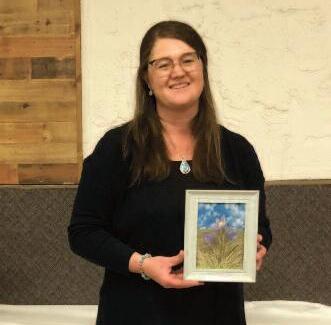
“I think that was important that the youth get to see the person that helps them with their project or their teacher or their coach or their manager, getting an award, and the whole community gets to clap and cheer and congratulate them ”
Aside from community events, the Rivers West Team now also shines a spotlight on the District’s volunteers on social media.
“The person is in the limelight for a week, and then that picture stays somewhere,
and people can go back and see it,” mills midgley says “It gives the award winners further recognition.”
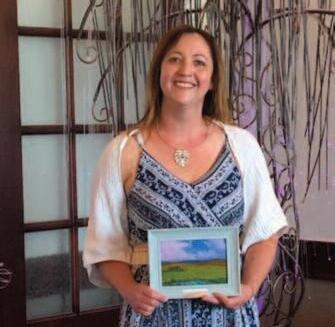
According to Tymoruski, volunteering has a huge impact on communities, the individuals that volunteer and those involved should be recognized.
Rivers West District for Sport, Culture and Recreation operates thanks to funding from Sask Lotteries Trust Fund for Sport, Culture and Recreation

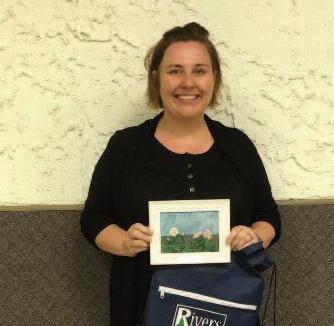
Volunteers across the province receive annual recognition and a personal visit from the Rivers West District
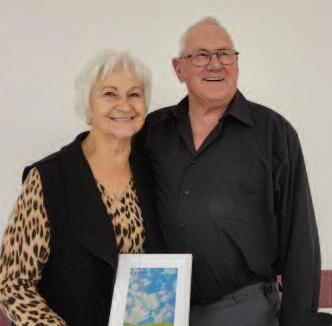
S p r I n G 2023 19
“No volunteer does what they do for personal glory....They do it because they're helping members of the community...”
Thanks to Volunteers
When you go to a show put on by the Battlefords Community Players, everyone you see bringing the production to life from the actors to the ushers and bartenders are all volunteers.
For over 75 years, Battlefords Community Players (BCP), a totally volunteer-run organization, has been bringing live theatrical entertainment to the Battlefords and area. over the years, BCP has produced 250 plays, involved hundreds of volunteers, and received over 70 individual and group awards
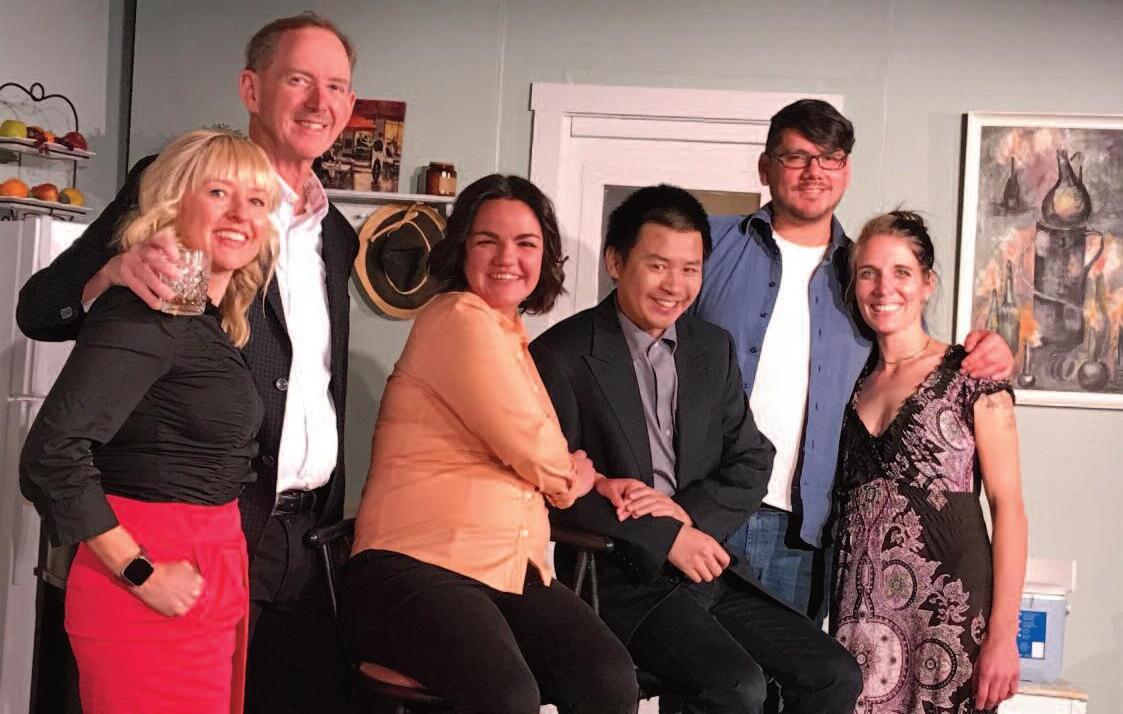
Donna Challis, BCP production coordinator, has volunteered for the club for over 50 years. In that time, she has witnessed how a strong commitment to a mission can keep a volunteer-run organization going even in tough times
Regardless of the circumstances, the organization has always produced at least one show per year

“It’s just the love of doing theatre, and the love of wanting to see community theatre in the Battlefords. That’s what keeps volunteers coming,” Challis says “Having a vibrant arts community is really important Those volunteers work really hard to make it happen.”
Putting on a show is a big undertaking, Challis says, especially for an organization that relies on volunteers for every task A high turnover rate comes with the territory for a volunteer-run organization
ToP: Volunteers are key to the great shows staged by the Battlefords Community Players over the past 75 years mIDDle: Donna Chalice (right) accepting a TheatreFest award for BCP has volunteered with the organization for 50 years

20 S p r I n G 2023
B a t t l e F O r D S c O m m U n I t y p l a y e r S c e l e B r a t e 75 y e a r S
“Having a vibrant arts community is really important. Those volunteers work really hard to make it happen.”
B y a n a c r I S t I n a c a m a c h O
In her time with BCP, Challis has seen the amount of volunteers rise and fall many times “It comes and goes,” she says “There always seems to be enough volunteers, but the core group changes quite often ”
one such period of low engagement came three years ago when CoVID hit. Challis says that it was the level of communication with their community and the group’s commitment to the safety of their volunteers that allowed them to operate during that time, with a reduced audience and distanced rehearsals
“Did we lose some volunteers? Absolutely But there was enough interest and desire among the group who came out And, they realized that we were serious about keeping them safe,” Challis says Difficulties recruiting volunteers have been an issue long before CoVID, says Challis, as it was for most groups in the province
“We’ve all gone through those ups and downs, with volunteerism dropping off significantly,” she says “There’s a base of volunteers that was created over the years, but as they get older, there’s not that new group” coming forward
For Challis, communication and personal connections are the key to keeping up with downward trends in volunteerism Aside from increasing communications on social media and the local newspaper, the group also hosts social activities for people to get together outside of shows. Challis says, this is a good opportunity to call up and engage volunteers who are drifting away
“I think all groups have to learn about personal contact making sure people know they are wanted, and needed, and can help,” she says.
looking to future, Challis says the club plans to keep going with their current four shows a year, with increased outreach and training opportunities for volunteers As a volunteer-run organization, the group is focusing on mentoring and developing new volunteers who bring the same passion for community theatre that has kept Battlefords Community Players afloat for 75 years “That drives us as volunteers and as people that just love theatre,” Challis says. “I’m still doing it because I love it.”
Battlefords Community Players is a part of Saskatchewan’s theatre network supported by Theatre Saskatchewan, funded by the Sask Lotteries Trust Fund for Sport, Culture and Recreation
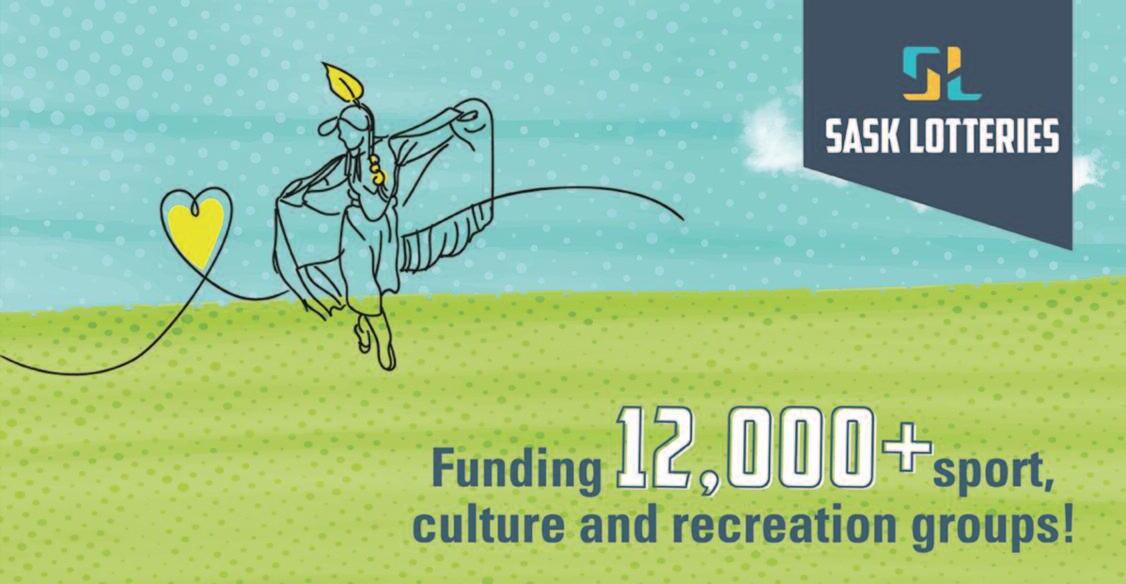


S p r I n G 2023 21
sustainable Path Forward
“They didn’t have a professional base and they didn’t have funding that was going to take them forward. After 30 years, the Centre wouldn’t make it much further than three or six months,” says White, the volunteer manager and board chair.
For years the Jasper Centre in maple Creek, sK, which serves as a museum and art gallery, was run by a dedicated group of volunteers, in a large space that used to be one of the town’s schools built in two phases in 1910 and 1914

In other words, “if the Centre was going to be successful, it had to be run more or less as a business and that we would not enter into any venture unless we broke even or made a profit ”
When Donny White found the Jasper Cultural and Historical Centre struggling seven years ago, the retired arts and heritage administrator, knew the organization needed a culture shift

As it happens with many volunteer-driven non-profits, that way of operating was no longer working White recognized this and looked to change how those involved viewed the Centre’s finances White says the motto now is “make or break even ”
Another shift White made was recognizing the Centre needed financial stability through fundraising initiatives, so they began running donation campaigns in 2017. While these changes helped, it was an outsider to the community who also played a huge role in financially revitalizing the organization through the $25,000 purchase of two steam-punk metal horse sculptures from the museum Then after the roof blew off the museum in a wind storm and the brick work on the two and half front façade required emergency work, that same donor came through again with a $250,000 donation
22 S p r I n G 2023 V O l U n t e e r h e l p S c U lt U r a l c e n t r e O n a
B y J O h n l O e p p k y
Alongside stabilizing the Centre financially, the longstanding volunteers were also key to keeping the organization afloat during the transition many served their terms on the board, then continuing to volunteer in other capacities, saving the Centre money. White adds, there were 75 volunteers involved in the production of one of the summer festivals in 2022.
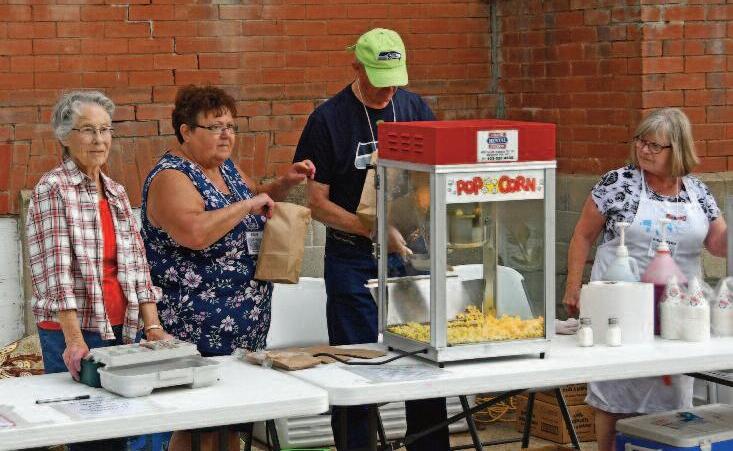
White says although the path to sustainability wasn’t easy, the future of the museum and cultural hub looks better now With a new manager in training at the centre (the first paid staff member since 2015), White is preparing to step down after his six years as board chair and acting manager to a simpler volunteer role. on the programming side, the Centre continues to expand its offerings White also attributes the Centre’s recent successes to its ability to resist what he calls “cultural colonialism” He explains that “you need someone leading that has an appreciation for the local culture to the degree that they know how to incorporate new ideas without offending or diminishing the local culture ”
Another part of the Jasper Centre’s growth has been due to a concerted effort to branch out with an increased focus on diversity and inclusion White says that the opening of new gallery exhibits, such as its new one focused on the achievements of women from southwest saskatchewan, the first of its kind in the museum’s history, has drawn even more visitors to the Centre
The other reason more visitors are now coming to the museum is because of White’s efforts to engage the philosophy that “change should be constant, so visitors keep coming back to view the changes in the gallery exhibits.” He says, “If you design properly it allows for changes within the gallery without losing the integrity of the overall gallery.”
But most of all, says White, the growth and sustainability of the Centre is due the committed crew of volunteers that keep the engine of the place running “Part of our success is that our volunteers understand what we are trying to achieve
and they know they are a part the unique experience that leaves visitors to the Centre wanting more.”
The Jasper Cultural and Historical Centre receives support from SaskCulture’s Museum Grant Program funded by Sask Lotteries Trust Fund for Sport, Culture and Recreation


PReVIous PAGe
ToP: Donny White volunteered his time to run the Jasper Culture and Historical Centre for over five years
BoTTom: Volunteers are instrumental to the Centre's many successful events Photos by John Bowie

S p r I n G 2023 23
Saskculture 404 - 2125 11th avenue, regina, Sk S4p 3X3 info@saskculture.ca • www.saskculture.ca
Volunteers contribute in many ways to Culture Days every year. Photo by shawn Fulton (2016)
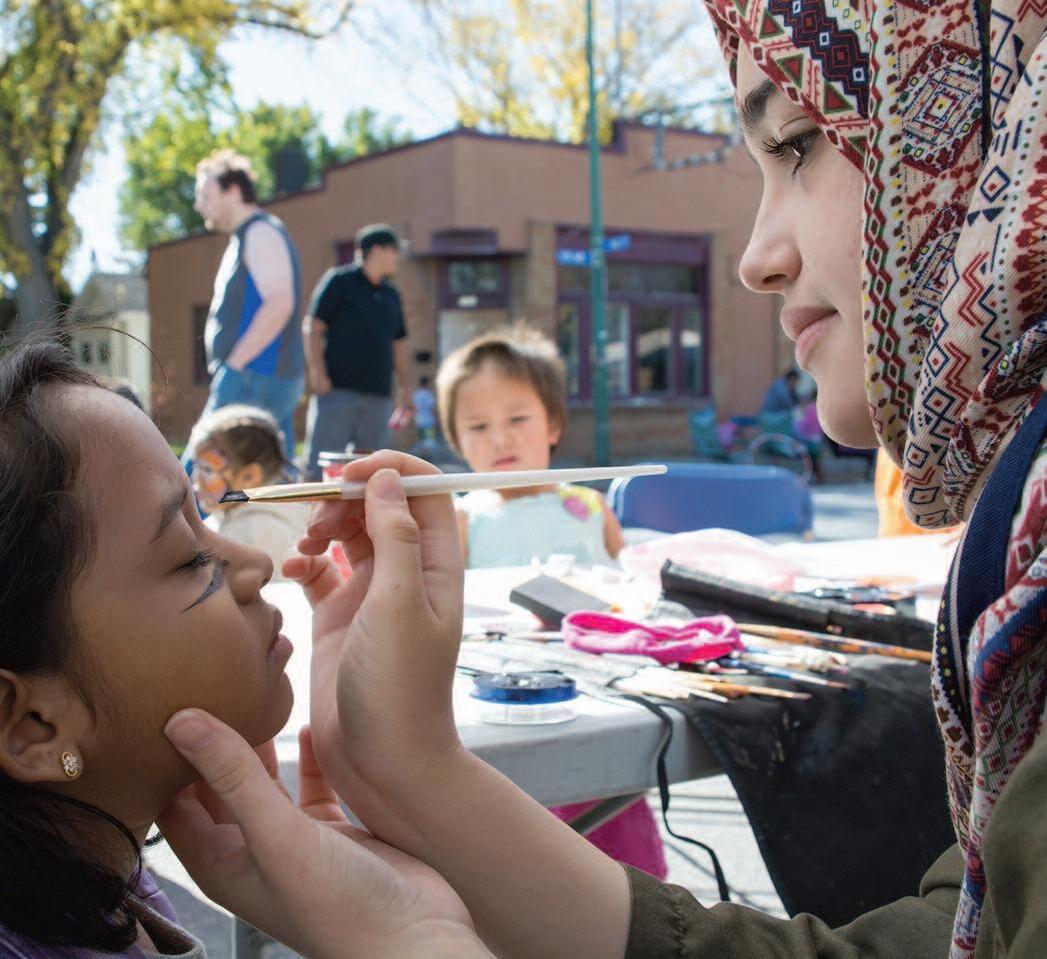
publication mail agreement #40063014
Return undeliverable Canadian Addresses to:

Administration Printing services 111-2001 Cornwall street Regina, sK s4P 3X9 email: adminprint@sasktel net



















































































